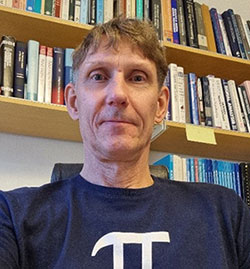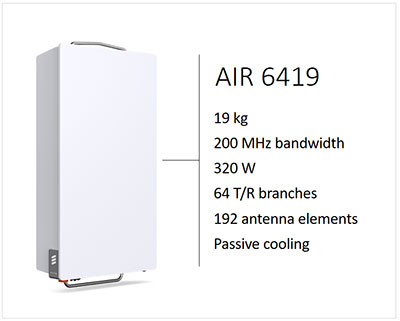Adjunct professors series: Bo Göransson
DIGITALISATION ADJUNCT PROFESSORS
The KTH Digitalization Platform regularly presents adjunct professors in the field of digitalisation, this time Bo Göransson at KTH/Ericsson.
In which department at Ericsson are you working and where are you an adjunct professor at KTH?

"I’m working at Standards & Technology which is a research department within the business unit networks at Ericsson and I’m an adjunct professor at the Division for Information Science and Engineering, within the School of Electrical Engineering," Bo Göransson says.
What is your research area and how does it relate to the business at Ericsson?
"My research area is multi antenna systems and architectures, that is, when a communication link has many antenna branches on at least one side of the link, but nowadays it is common that both the base station and user terminal is equipped with multiple antenna branches.

Beamforming and MIMO (Multiple Input Multiple Output) are key multi antenna features to increase the coverage and capacity of current and future wireless access networks. Since it is common to deploy 5G systems on higher carrier frequencies, they experience a higher pathloss which will limit the coverage. To mitigate this, a larger antenna with many elements can be deployed at the cell site.
This together with advanced beamforming algorithms can restore the coverage to be similar to that of lower frequency bands. If both ends of the communication link has several antennas, so-called MIMO technologies can be used to substantially increase the data-rate to users, and by that the capacity of the network, by transmitting several data streams in parallel. In the industry (and academia), this is often referred to as Massive-MIMO technology.
My research is mainly related to radio and basebands algorithms that can be used in multi antenna systems. This could relate to baseband algorithms such as channel estimation, equalization or the beamforming functionality for both uplink and downlink. But I’m also interested in what we refer to as radio algorithms, which are used to convert the baseband signal to a high-power radio frequency signal that can be transmitted through the antenna system. These algorithms are used to increase the efficiency and to shape the signal so that we fulfill regulatory requirements that make sure that we can co-exists with other services using the radio spectrum. For anyone interested in this area, I can highly recommend our “Massive MIMO handbook” that can be downloaded from ericsson.com/en/ran/massive-mimo .
What do you think are the next large (research) challenges you and Ericsson will face in the future and why? Is there an opportunity for KTH researchers that work in the digitalisation domain to help? What competences are you looking for?
"The complexity in both the radio and baseband units are constantly increasing due to the ever-growing capacity needs. Since each node should process signals to/from very many antenna and radio branches, each with an increased bandwidth, the overall complexity increase will be very large. At the same time the energy cost should drastically be reduced, hence more energy efficient hardware and software algorithms are needed to meet current and future sustainability requirements.
It can be expected that future networks would support even higher carrier frequencies, larger bandwidth and much larger antenna arrays, and hence require much more compute resources than today’s systems. To support this and still lower the energy consumption of the network equipment requires research in many areas. It will not be possible to meet tomorrow’s requirements with only advancements in one domain, but rather a co-design of both hardware and software algorithms is needed.
It is also fundamental to understand how a modern wireless communications system works to be able to use information about the transmitted or received signal waveform to keep or increase performance without increasing the energy consumption. To achieve this it may not be enough with only much better efficiency of the hardware and software algorithms, but also new ways to deploy our networks and new materials to support very large bandwidths are needed."
What would be good ways to enhance the collaboration between KTH researchers and Ericsson/you?
"Current collaborations are many times based on adjunct positions, bilateral research projects or participation in larger competence centres. In general, this works well but many times lack involvement from several competence areas that could lead to new solutions based on deep knowledge of both RF radio implementations as well as advanced baseband algorithm knowledge. A good way to enhance this would be to have a better collaboration between different departments/divisions at KTH where the competences could be used to formulate and solve problems related to the mix of radio frequency and baseband processing under strict requirements on e.g., performance and power consumption. In this process, Ericsson could be a partner helping out during both with the problem formulations as well as providing real world data."
How can we approach you and Ericsson best?
"It is always possible to contact me via mail or phone for discussions related to multi antenna systems."
